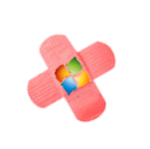 Reuters reports that Symantec has taken the rare step of advising customers not to use one of its mainstay products, saying that remote control software product pcAnywhere is at increased risk of getting hacked after details and code were stolen. Symantec is asking customers to temporarily stop using the product, until it releases an update to the software that will mitigate the risk of an attack. PcAnywhere is also bundled with other titles, like Symantec’s Altiris line of software for managing corporate PCs.
Reuters reports that Symantec has taken the rare step of advising customers not to use one of its mainstay products, saying that remote control software product pcAnywhere is at increased risk of getting hacked after details and code were stolen. Symantec is asking customers to temporarily stop using the product, until it releases an update to the software that will mitigate the risk of an attack. PcAnywhere is also bundled with other titles, like Symantec’s Altiris line of software for managing corporate PCs.
This is a serious step, and I applaud Symantec for coming clean on the risks of this powerful and popular product. Most vendors woould simply warn users of increased risk and provide workaround and mitigation steps that may or may not be implementable or effective. I hope that Symantec can release new code quickly, and overcome this unfortunate problem.
 Well, that didn’t take long, did it? Aren’t you glad you took the advice of so many security bloggers and patched December’s out-of-cycle Microsoft ASP.NET Web development platform vulnerability?
Well, that didn’t take long, did it? Aren’t you glad you took the advice of so many security bloggers and patched December’s out-of-cycle Microsoft ASP.NET Web development platform vulnerability? Detailed information has been published describing a new method to exploit hash tables, known as hash collision attacks. These attacks are not specific to Microsoft technologies and affect other web service software providers as well. This particular vulnerability affects all versions of Microsoft .NET Framework and could allow for an unauthenticated denial of service attack on servers that serve ASP.NET pages.
Detailed information has been published describing a new method to exploit hash tables, known as hash collision attacks. These attacks are not specific to Microsoft technologies and affect other web service software providers as well. This particular vulnerability affects all versions of Microsoft .NET Framework and could allow for an unauthenticated denial of service attack on servers that serve ASP.NET pages. There have been reports of two critical vulnerabilities being actively exploited in targeted attacks against Adobe Reader 9.x on Windows. These vulnerabilities could cause a crash and may allow an attacker to take control of the affected system.
There have been reports of two critical vulnerabilities being actively exploited in targeted attacks against Adobe Reader 9.x on Windows. These vulnerabilities could cause a crash and may allow an attacker to take control of the affected system. I am a big fan of behavior based malware analysis. I have assessed several products that claim to use behavioral analysis, most end up as a desktop product that constantly prompts the user to determine whether or not an action is nefarious or not. I am still waiting for a single vendor to introduce a solid, reliable, and trustworthy antimalware engine that analyzes behaviroal characteristics and makes intelligent decisions regarding applications and communications, while still performing at a decent clip and not hogging all of the PC’s resources, or relying on non-technical users to make security decisions.
I am a big fan of behavior based malware analysis. I have assessed several products that claim to use behavioral analysis, most end up as a desktop product that constantly prompts the user to determine whether or not an action is nefarious or not. I am still waiting for a single vendor to introduce a solid, reliable, and trustworthy antimalware engine that analyzes behaviroal characteristics and makes intelligent decisions regarding applications and communications, while still performing at a decent clip and not hogging all of the PC’s resources, or relying on non-technical users to make security decisions. Websense has found an alarming Facebook scam taking advantage of yesterday’s tragedy in Oslo, Norway, infecting an estimated one user every second. The scam is a form of ‘clickjacking’ that replicates itself on users’ walls after they click on fake posts within their news feed. I could not find details of what the payload is from this attack, but rest assured, these types of attacks generally look to infect your computer, and your friends’ computers with financially motivated malware.
Websense has found an alarming Facebook scam taking advantage of yesterday’s tragedy in Oslo, Norway, infecting an estimated one user every second. The scam is a form of ‘clickjacking’ that replicates itself on users’ walls after they click on fake posts within their news feed. I could not find details of what the payload is from this attack, but rest assured, these types of attacks generally look to infect your computer, and your friends’ computers with financially motivated malware.